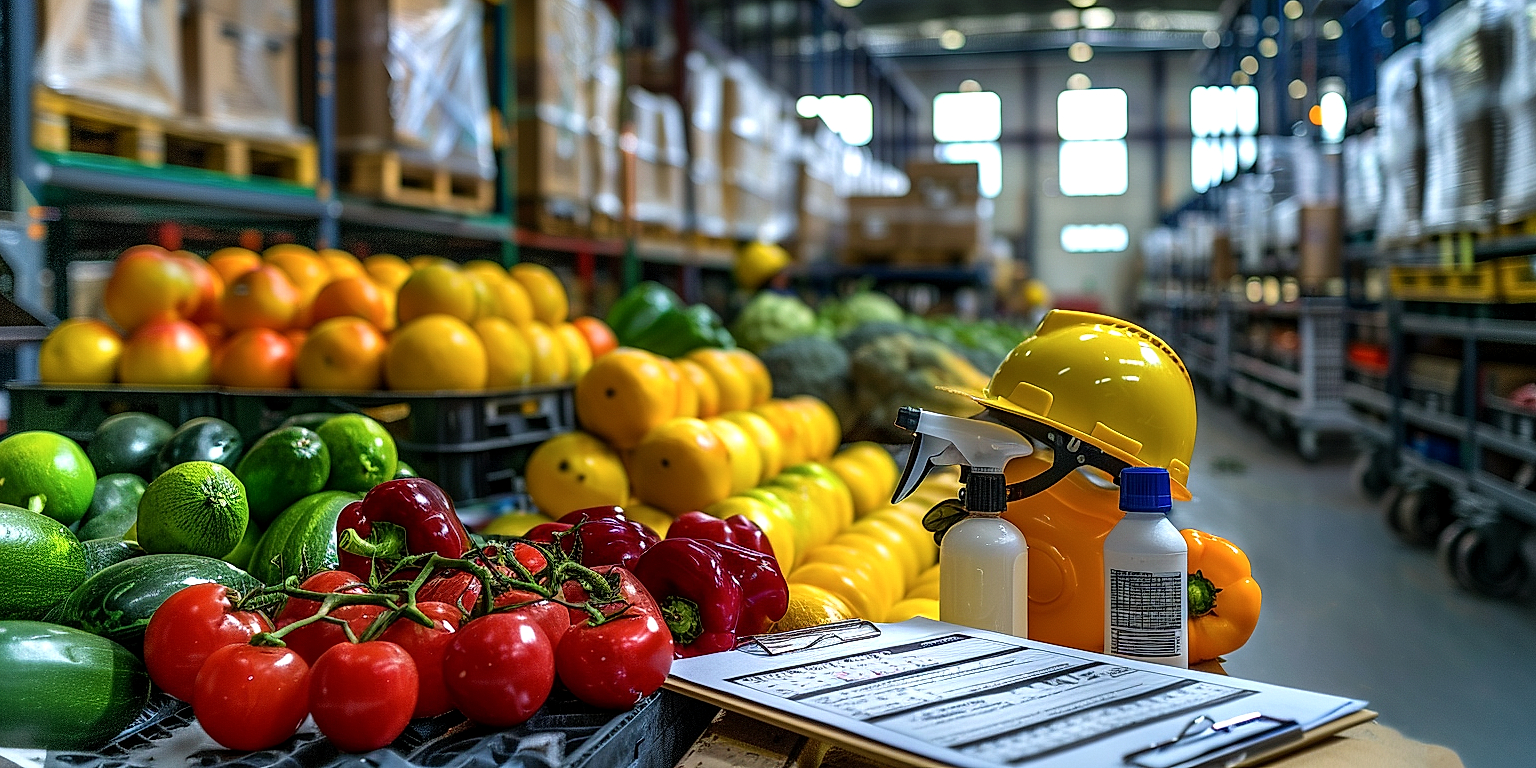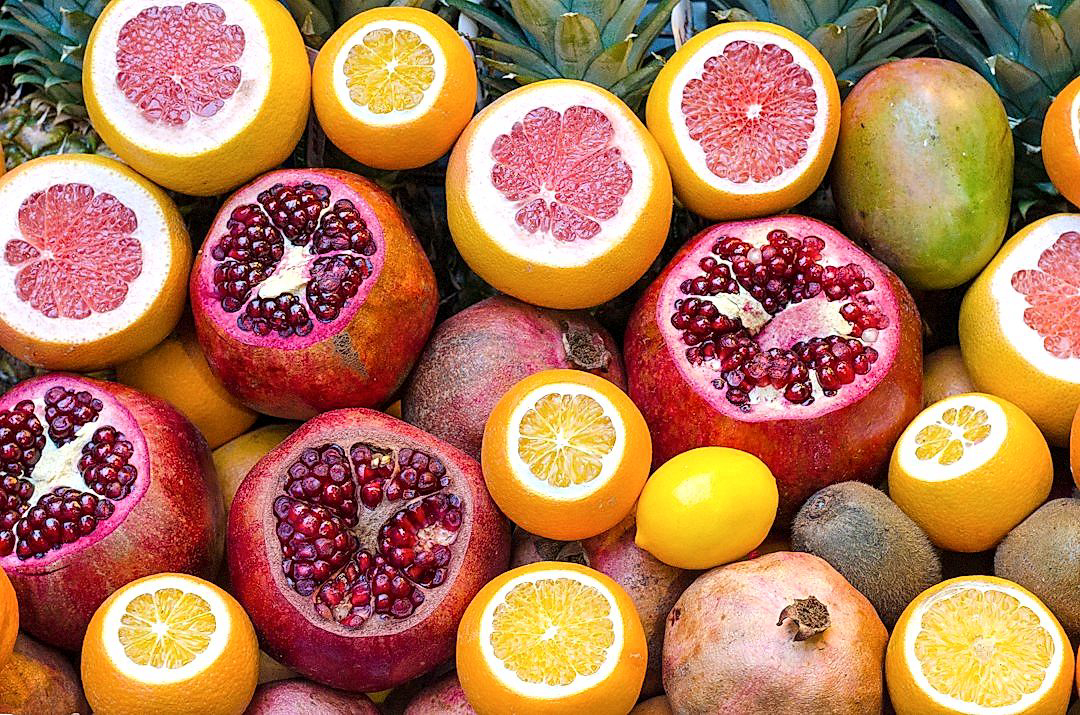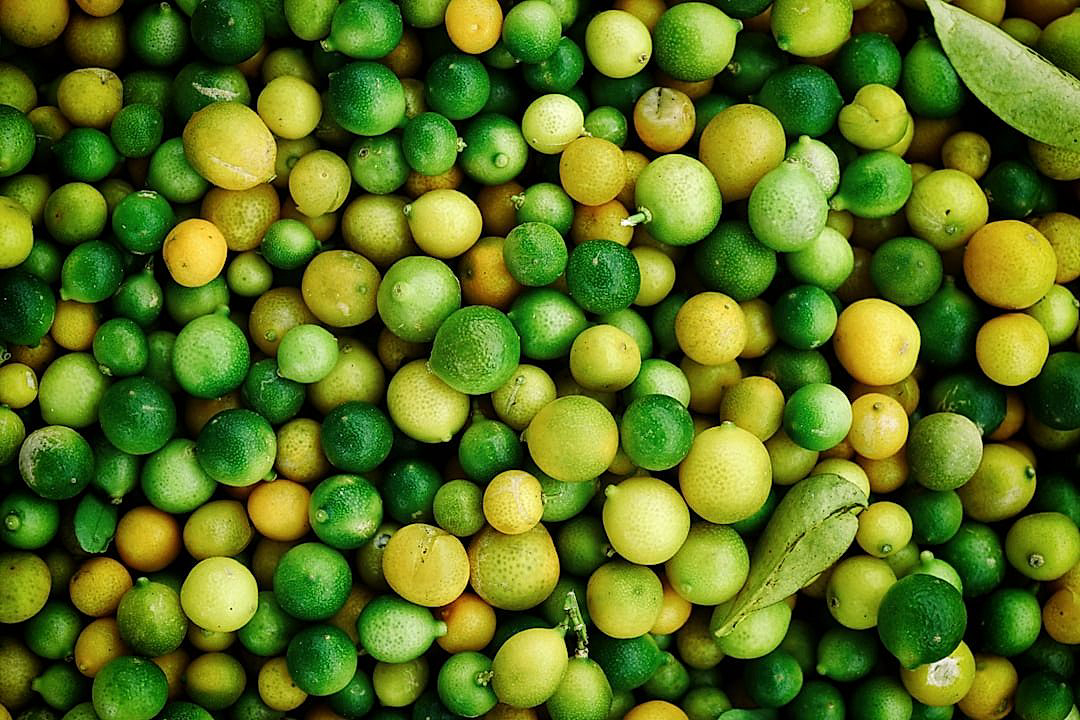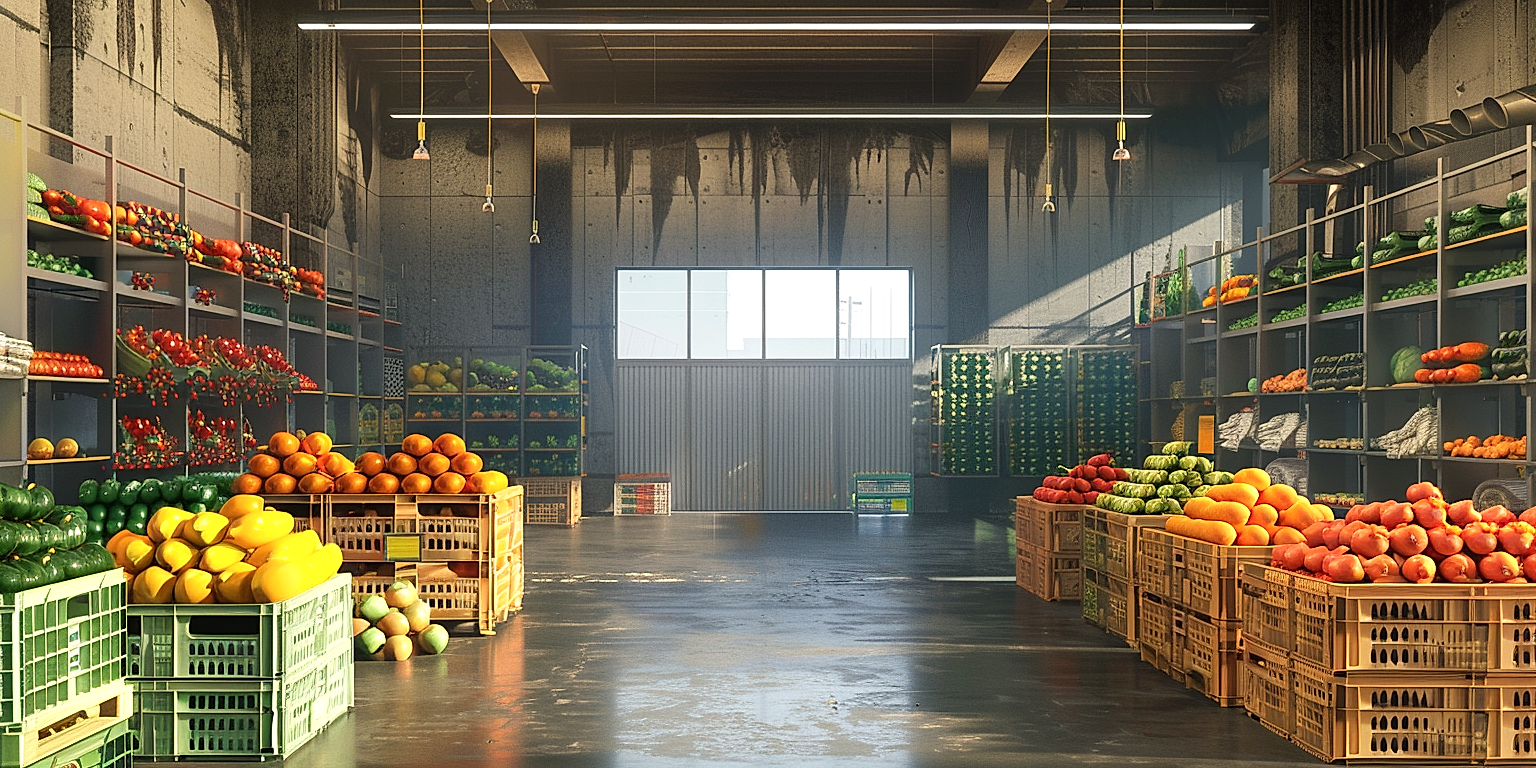In the realm of food safety, one cannot have a conversation without invoking the principles of hazard analysis.
It remains an essential process not just in food preparation, but critically within the context of produce distribution.
As the industry navigates the complexities related to public health and safety, a comprehensive understanding of possible hazards in the process chain becomes crucial.
Given the inherent risks of foodborne diseases, a meticulously planned analytical strategy is integral to prevent harmful incidents.
Different players in the supply chain, from farmers to retailers, need to work in harmony to mitigate the risks.
This article will delve into the effective strategies and practices used in analyzing potential hazards in the world of produce distribution.
Contents
- Hazard Analysis Strategies In Produce Distribution
- 1. Regular Equipment and Machinery Inspection
- 2. Strict Quality Control of Raw Materials
- 3. Implement hygiene and sanitation protocols
- 4. Continual Staff Hazardous Material Training
- 5. Proper Product Storage and Handling
- 6. Frequent Pest Control Measures
- 7. Comprehensive Supply Chain Risk Assessment
- 8. Adequate waste disposal procedures
- 9. Use of Certified Protective Equipment
- 10. Enforced Safety Regulation Compliance
- The Bottom Line
Hazard Analysis Strategies In Produce Distribution
1. Regular Equipment and Machinery Inspection
In the context of produce distribution, regular equipment and machinery inspection plays a vital role.
As a core component of the hazard analysis strategies, routine inspection ensures that all equipment used in processing, packaging, and transportation are in top-notch condition.
This not only helps in maintaining the quality of the produce, but it also considerably reduces the chances of accidents and injuries on site.
Equipment malfunctions can lead to significant problems, such as delays in delivery, compromise on product quality, and sometimes can even pose a risk to worker safety.
Thus, regular inspection acts as a safeguard against potential hazards and upkeeps the smooth operation.
For instance, machinery used in packaging should be inspected for any malfunction or irregularity that can lead to improper sealing or even contamination of the produce.
Similarly, vehicles that carry the produce need to undergo regular checks for temperature control functionality to prevent spoilage.
This routine check is especially important in the transportation of perishable items, such as fruits and vegetables, as their exposure to improper temperatures can lead to decay or bacterial growth, leading to potential health hazards.
Frequent equipment audits and checks also allow early detection of potential failures, enabling staff to address these issues proactively and prevent major breakdowns or accidents.
Therefore, implementing a comprehensive equipment and machinery inspection regime is beneficial from a safety, quality, and efficiency perspective in the context of produce distribution.
These inspections should not only be conducted regularly but should also be thorough and executed by trained professionals who can effectively identify any signs of wear and tear, malfunction, or potential risks.
While companies often have internal inspection teams, it’s also beneficial to have these inspections audited by reputable third parties for unbiased assessments.
Besides, leveraging technology, such as advanced monitoring systems, can also significantly improve inspection processes, making them faster, more thorough, and less prone to human errors.
The data obtained from these inspections can further provide valuable insights to optimize the machinery’s performance and pave the way for better preventive strategies in the future.
In essence, regular equipment and machinery inspection is an integral part of hazard analysis strategies in produce distribution that helps maintain quality, uphold safety, and ensure efficiency in operations.
2. Strict Quality Control of Raw Materials
The implementation of a strict quality control of raw materials plays an integral part in hazard analysis strategies in produce distribution.
In agriculture and related industries, produce quality is directly related to the raw materials used in cultivation and packing.
For instance, the type of soil, quality of seeds, quality of fertilizers, and post-harvest handling materials, all play an essential role in determining the final product quality.
Therefore, regulatory bodies and industry stakeholders must implement a robust mechanism for strict quality control of raw materials.
To ensure this, raw materials should always meet the quality thresholds set by the relevant food safety regulation bodies.
This will not only ensure the safety and quality of the final product but will also considerably minimize potential hazards that might occur in the produce distribution chain.
Monitoring the quality of raw materials is an effective preemptive strategy to prevent potential hazards and deficits in product quality.
Furthermore, the personnel responsible for inspecting the raw materials should be trained adequately to identify any potential quality compromises and take necessary actions promptly.
An efficient quality control system should be able to trace the source of any quality compromise back to its root cause and address it effectively.
By maintaining strict control over the quality of the raw materials, distributors can ensure the delivery of safe and high-quality produce to consumers.
Comprehensive documentation of the quality control processes is also necessary to aid ongoing improvement efforts and for reference in case of any quality issues.
Implementing a rigorous inspection of raw materials is, therefore, a sound risk management practice and an essential part of a robust hazard analysis strategy.
The use of technology, such as automated sorting and grading equipment, can enhance the efficiency and effectiveness of these inspections.
Overall, the consistent implementation of stringent quality control measures for raw materials is a vital strategy to limit the risk of contamination or substandard quality in produce distribution.
It not only ensures the integrity of the distribution chain but also helps in building and maintaining consumer trust.
3. Implement hygiene and sanitation protocols
Implementing hygiene and sanitation protocols is paramount to prevent contamination of produce during distribution, thereby ensuring the safety and quality of food products.
These protocols range from employee hygiene to equipment cleanliness, hence, covering all aspects of the distribution process.
The first step implementing these protocols comprises of ensuring personal hygiene of all employees involved in the distribution process.
This involves provision of facilities for employees to maintain cleanliness, such as washing facilities, personal protective equipment, and predefined sanitation standards.
The enhancement of sanitation standards should be continuous and consistent, to ensure they adequately address the evolving challenges in produce distribution.
To maximize the effectiveness of employee hygiene protocols, regular training and reminders are necessary.
They ensure the employees are acquainted with the required standards and they adhere to them without fail.
Moreover, the premises and tools used in the distribution process must be kept clean and sanitized at all times.
This prevents the risk of cross-contamination from other products, pests, or environmental factors.
It is also important to regularly perform swab tests and visual inspections to confirm the effectiveness of cleaning routines.
Sanitation is not complete without proper waste management, hence, during the distribution process, the disposal of waste should be handled through dedicated and controlled processes that will not contaminate the produce.
In fact, waste disposal methods should be such that it poses no risk to the produce, employees, or the environment.
Beyond these, companies distributing produce should adopt a mindset of continuous improvement towards sanitation protocols.
This involves staying acquainted with current trends, technology, and best practices, then incorporating these improvements into their sanitation procedures.
Overall, hygiene and sanitation protocols in produce distribution are an integral part of hazard analysis strategies, designed to ensure the end consumer receives safe, quality food products.
4. Continual Staff Hazardous Material Training
Produce distribution involves the handling of various materials, some of which can potentially be hazardous.
As such, one of the critical aspects in ensuring safety and reducing risks is the continual training of staff in handling hazardous materials.
This training aims to equip employees with the necessary knowledge and skills to identify, handle, and dispose of these potentially harmful materials safely.
It is crucial to note that hazardous materials in the context of produce distribution may not necessarily be hazardous in the traditional sense.
They may include harmful bacteria, moulds, toxins, or chemical residues from pesticides and fertilizers which, if not handled appropriately, can contaminate the produce and pose significant health risks.
A well-designed training program would introduce employees to various types of potential hazards, teach them how to protect themselves and prevent accidental exposure to these materials.
Furthermore, employees should be trained to handle emergency situations, such as accidental spills or leaks of these materials.
Periodic refresher training is also vital to ensure that employees are up-to-date with the latest safety protocols and best practices in handling hazardous materials.
Through the training, employees should also learn about the safety equipment they are expected to use while handling these hazardous materials and its proper usage.
Necessary practices such as the proper storage and disposal of hazardous materials should also be covered in the training.
Documenting the training program and maintaining records of staff who have completed the training can help to demonstrate compliance with safety regulations and serve as evidence of due diligence in the event of any safety inspections or audits.
When executed properly, a comprehensive hazardous material training program can effectively reduce the risks associated with handling hazardous materials in a produce distribution setting.
However, the training program’s success is heavily reliant on continuous management support and commitment, which should be communicated clearly to all employees.
Moreover, frequent evaluations of the training program are necessary to assess its effectiveness and make any necessary improvements.
This not only ensures the safety and wellbeing of the employees, but also the integrity and safety of the produce being distributed.
In summary, continuous hazardous material training is an essential strategy in hazard analysis in produce distribution, focusing on equipping employees with the necessary skills and knowledge to safely handle these materials.
5. Proper Product Storage and Handling
In the context of produce distribution, proper storage and handling measures play a crucial role in maintaining the quality and safety of the products.
These protocols are often an overlooked yet fundamental aspect of prudent Hazard Analysis Strategies.
Being frequently part and parcel of an entity’s hazard control plan, they prove effective in preventing contamination and, thus, potential foodborne illnesses.
Bearing in mind how perishable produce items can be, poor storage and handling methods can quickly lead to the deterioration of goods, breeding ground for pathogens and ultimately public health risks.
If fruits and vegetables are exposed to inappropriate temperatures, inadequate air circulation or subjected to other unfavorable storage conditions, their edible and nutritious qualities can degrade, making them unfit for consumption.
Guidelines or standards for acceptable storage and handling practices often recommend maintaining the ripeness of the product, thus extending its shelf life by controlling ethylene exposure and regulating temperature humidity.
Furthermore, these guidelines ensure the proper cleanliness and sanitization of storage areas to restrict cross-contamination from decaying produce or pests.
It is also important to monitor the storage area regularly for any signs of pests or rodents, which may introduce bacteria or other microbes into the stored items.
With regard to handling, food distribution companies must train their staff to strictly adhere to hygiene principles during loading, unloading, and transportation of produce to minimize potential contamination risks.
Another vital point is the proper packaging of items, which should be adequate to protect the produce during its journey from the field, through various storage facilities, and finally, to the consumer’s table.
For instance, all boxes used for transportation or storage should be clean and dry, and produce should be handled gently to prevent bruising or damage, as these conditions can encourage microbial growth.
Staying vigilant with such preventive measures can reduce a myriad of risks associated with the storage and handling of produce.
Therefore, investing in these protective procedures is not only a critical part of Hazard Analysis Strategies but also a long-term benefit for the safety reputation of the distribution company.
In essence, product storage and handling procedures are critical checkpoints in the produce supply chain, required to monitor and control to uphold food safety standards.
6. Frequent Pest Control Measures
Pest control is an integral aspect of the safe handling and distribution of produce.
The presence of pests can compromise the safety and quality of the produce, leading to foodborne illnesses and other health risks.
Produce distributors must thus implement frequent and effective pest control measures in their facilities.
These measures should not only focus on eliminating existing pests but also preventing any potential infestations.
Pests can contaminate food products directly, or indirectly through urine, droppings, hair, and feathers, thereby introducing bacteria, parasites, and other harmful pathogens.
Frequent pest control activities can help minimize these risks and maintain the quality of the produce throughout the supply chain.
Pest control does not merely consist of managing insects or rodents; it also incorporates managing birds, moulds, and bacteria, among other potential issues.
Pest control measures in produce distribution not only involve physical techniques but also chemical and biological methods.
Pest control measures should be conducted by professionals who are well trained and certified in this field.
Pest management personnel should also use tools and products deemed safe for use within food handling and storage environments.
It’s essential for produce distributors to maintain a detailed record of all pest control activities conducted.
These records will assist in tracking the effectiveness of measures adopted and provide valuable data for future strategy development and audits.
Continuous training of staff in pest management is also a necessary measure.
This training should not only focus on pest identification but also on understanding the life cycles of pests and potential entry points into facilities.
Training also helps staff identify signs of a potential infestation and take immediate corrective action before the issue escalates.
In conclusion, frequent pest control measures are crucial in preventing contamination and ensuring safety during produce distribution.
7. Comprehensive Supply Chain Risk Assessment
When managing the distribution of produce, a comprehensive supply chain risk assessment is crucial.
This involves the process of identifying, assessing and controlling threats to the company’s supply chain.
These threats may emanate from various sources such as financial processes, manufacturing errors, legal liabilities, and natural disasters among other disruptive events.
For produce distribution, the supply chain risk assessment also includes risks involved in farming processes like pesticides, biological dangers, and other field-related hazards.
Understanding and mitigating these threats upfront can protect the company from serious reputational, financial, and operational damage.
This ultimately ensures the smooth running of the supply chain and minimal disruption to business operations.
Companies should therefore conduct regular risk assessments to keep abreast of any potential threats that could disrupt their supply chain.
This process should also take into consideration the fact that risks can evolve and change over time, and what might not have been a risk at one point may become one later on.
One key aspect of this assessment is the identification of the weak points in the supply chain, which are most likely to be impacted by potential threats.
Once these are identified, appropriate measures can be put in place to either mitigate or eliminate these threats.
These risk mitigation strategies might involve changes in operational processes, technological enhancements, and the implementation of strict quality control measures.
Fundamentally, a comprehensive supply chain risk assessment provides a robust foundation for effective overall risk management.
It allows businesses to take a proactive approach in identifying risks and put in place strategies to deal with these, rather than reacting when a risk becomes a reality.
This can significantly reduce business downtime, protect financial security, and maintain reputation in the marketplace.
Therefore, it is essential for the successful operation of any business working in produce distribution to implement a comprehensive supply chain risk assessment.
8. Adequate waste disposal procedures
One of the key concepts in implementing effective hazard analysis strategies in produce distribution is having adequate waste disposal procedures.
Waste, particularly if it’s produced, handled, or disposed of inappropriately, can become a source of substantial contamination risks to the food products, and ultimately, to the consumers.
A professional disposal strategy essentially needs to take into account various aspects including the type of waste being produced, its impact on the environment, and the overall health hazards it can trigger.
This is why companies need to invest in training their staff adequately on the relevant waste disposal procedures.
Apart from training, it is equally important to have proper waste disposal infrastructures in place.
These infrastructures should not just be compliant with the relevant laws and regulations, but should also be efficient enough to quickly dispose off any waste that might potentially pose a risk to food safety.
Ranging from waste bins to advanced waste disposal systems, all equipment used should be properly maintained and upgraded as necessary.
Furthermore, the waste bins and disposal grounds should be located at a safe distance from the areas where produce is being stored or processed.
Periodical inspections and audits should be conducted to ensure the compliance of these processes with the industry standards and regulations.
It’s essential, as well, to maintain detailed records of waste production and disposal, as a part of the record-keeping protocols for traceability and accountability.
Besides the physical aspects, all areas related to waste disposal should follow strict hygiene protocols to avoid contamination.
Produce distribution companies should also engage with the local community and local authorities to employ waste recycling practices wherever possible.
Most importantly, these practices should be part of a continuous improvement process, always open to revision and improvement.
The procedures should be regularly scrutinized, analyzed, and updated according to new findings or changes in technology and regulations.
Manage an effective waste disposal system is paramount to avoid any possible food contamination, maintain a sustainable and healthy environment, and deliver high-quality products to consumers.
This emphasis on effective and responsible waste disposal is not just a matter of maintaining business reputation and consumer trust, but it also becomes a crucial part of ensuring the continuity of the food supply chain, and more importantly, of upholding public health and safety.
9. Use of Certified Protective Equipment
The utilization of certified protective gear is a critical component of implementing a robust hazard analysis strategy in the distribution of produce.
Such safety equipment can notably decrease the threat of contamination or injury, subsequently enhancing food safety and worker protection.
This gear can include gloves, face masks, safety goggles, and protective clothing, each of which has a distinct function to protect workers and the product from various hazards.
The significance of using protective equipment that has notably been certified is imperative.
Quality certification ensures that the gear used has successfully met rigorous safety standards and can offer optimal protection.
Uncertified gear could have undetected flaws and might not provide the necessary level of protection, potentially endangering both the product and workers.
Produce distributors should regularly check for the certification status of their protective gear and make necessary updates where required.
As part of hazard analysis strategies, this approach ensures that gear is kept up-to-date with the most recent safety standards.
Furthermore, protective gear should be suitably maintained and promptly replaced when damaged or no longer fit for purpose.
Protective headgear, for example, should at all times be in good working condition with no cracks or deformation that might compromise the protection provided.
In addition to regular maintenance and inspections, adequate training on the proper use of protective gear is essential for ensuring safety.
Workers should be aware of the importance of wearing such gear, how to wear it effectively, and be trained on the correct procedures for putting it on and removing it.
Regular training sessions can encourage worker compliance and assure proper use.
Organizations need to allocate sufficient budget and resources for the acquisition, maintenance, and training of certified protective gear as part of their hazard analysis strategy.
Overall, the use of certified protective gear is an essential part of a comprehensive risk management plan in the produce distribution sector.
It ensures the safety of workers and significantly decreases the chances of product contamination, thereby preserving the integrity of the produce and ultimately earning the trust of end consumers.
10. Enforced Safety Regulation Compliance
Enforced safety regulation compliance plays a pivotal role in hazard analysis strategies in produce distribution.
These regulations are designed with the pertinent hazards inherent in the agricultural supply chain in mind.
Adhering to these safety regulations can significantly minimize risks associated with the handling, storage, and distribution of produce.
Regulatory bodies have established standards and regulations to ensure the safety of food products from farm to table.
Oftentimes, these regulations encompass a broad range of areas such as worker health and safety, equipment maintenance, product handling and storage, and waste disposal.
Attaining and maintaining compliance provides an assurance of safety to the consumers, distributors, and stakeholders in the agricultural supply chain.
Distributors who prioritize enforced safety regulation compliance often enjoy increased trust and confidence from their consumers and partners.
Adapting to and implementing these regulations may require an investment of resources, but the benefits in terms of safety and reputation significantly outweigh the costs.
Moreover, non-compliance with safety regulations can lead to hefty fines, reputational damage, and even closure of operations.
In most jurisdictions, these safety regulations are enforced by governmental bodies, and frequent inspections are carried out to ensure compliance.
For instance, specific regulations may mandate regular sanitation, personal protective equipment use, and adequate training of personnel in handling hazardous materials.
Investing in periodic staff training can be beneficial in ensuring understanding and adherence to safety protocols.
These safety compliance strategies have the ability to transform potential hazards into controlled risks, thus ensuring the well-being of all stakeholders and providing consumers with safer products.
The process of safety regulation compliance reinforcement also aids in continually identifying and adapting to new potential hazards in the produce distribution industry.
Thus, companies should view adhering to safety regulation compliance not as an optional measure but as an integral part of their risk management strategy.
The Bottom Line
Adhering to these stringent, proactive measures unequivocally amplifies the safety standards within any organization.
Regular inspections, quality control, and robust hygiene protocols essentially eliminate hazards at the source.
Consistent training ensures employees stay updated and alert to risks.
Alongside, accurate product handling and pest control measures contribute to a safer work environment.
Instituting a thorough supply chain risk analysis, efficient waste disposal, use of certified protective gear, and strict compliance to safety regulations not only fosters a culture of safety and accountability but also bolsters trust with consumers, employees, and stakeholders alike.
Therefore, these ten factors must form the backbone of any industrial safety plan to achieve an optimal level of operational safety and integrity.




